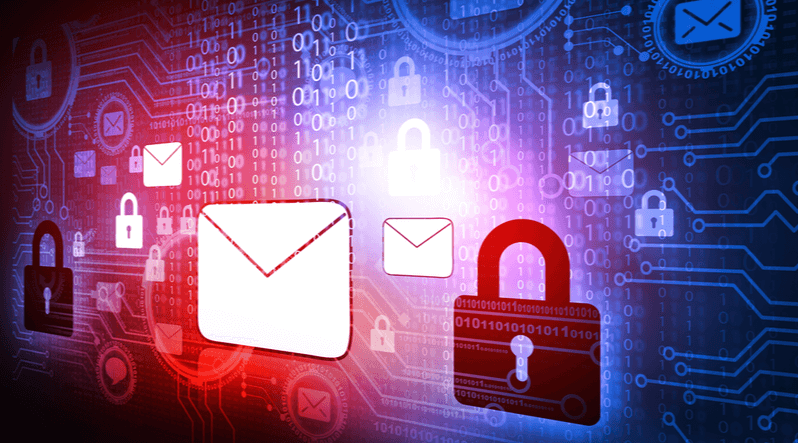Balancing Email Security with User Experience

Balancing Email Security with User Experience
Introduction:
In the modern-day electronic environment, one always has to make a compromise between security and good user experience when it comes to emails. For one, strong email security is needed in order to prevent leakage of sensitive information and any malicious activity. On the same note, high security may sometimes pose difficulties for users in interacting with their systems. The right balance between these elements has to be reached if the integrity of the communications has to be maintained along with ensuring the satisfaction of the users.
Email security protection
Good email security protection should not only be against various threats, such as phishing, spoofing, and unauthorized access to accounts, but also protection from those very legitimate activities being unduly impeded. This sets a delicate approach on the part of security protocols that must be so designed as to support the user without burdening him.
Email authentication protocols are the emerging necessity in combating fraud and phishing attacks through electronic mail. Technologies like SPF (Sender Policy Framework), DKIM (DomainKeys Identified Mail), and DMARC (Domain-based Message Authentication, Reporting, and Conformance) are important in verifying the authenticity of each and every email. These protocols help in eradicating spoofing and phishing attacks by confirming an email’s genuineness from its very purported source.
Email security status
The good implementation of those protocols can now substantially enhance email security status: “SPF, for example, checks that the incoming email is coming from a server that is authorised; adding a digital signature to the email, as applied by DKIM; DMARC is a combination of those technologies applied to enforcing policy and reporting on problems with authentication.
Optimizing Email Security Settings Without Sacrificing Usability:
“Setting up the security settings for emails calls for careful balancing between security and user needs. On the other hand, lax settings can leave systems open to attack.
This can be further fine-tuned in the layered approach to security by threshold settings on the spam filters and by better customization to accommodate the varied needs of the users. Enhanced permissions and tweaking of such settings are to be continuously reviewed and adjusted accordingly based on feedback and the potential of new threats. Balancing these features ensures that security mint rend the mail user-friendly and easily managed by the users.” – Tal Holtzer, CEO of VPS Server
Educating Users on Security Best Practices while keeping the user experience uncomplicated:
“User education is a very important ingredient of a successful Email Security Strategy. Aware users who best know the email security practices are less likely to be victimized by Phishing and other threats. However, efforts of education have to be measured in order not to swamp users with technical jargons or complex instructions that could detract from their overall experience.
Frequent reminders and updates may help keep security near the top of mind without burdening the user. By definition, making education on security just a seamless and organic part of the user experience will lead to overall enterprises’ security, as well as user satisfaction.” – Leo Baker, Chief Technology Officer at Vendorland
Revisiting and Revising Security Provisions in Sync with Evolving Threats:
The landscape of e-mail threats is always a moving target. What was considered secure a few months ago may not be today, as new vulnerabilities and attack vectors emerge. Old security measures, therefore, cannot be the solution; keeping these measures essentially current is what will give the best protection.
Regular audits and updates should form a part of the proactive security strategy. This would also involve the assessment of the effectiveness of current protocols in place, identification of any potential weaknesses in these protocols, and making needed adjustments. Revisions and updates, of course, should be installed in such a way that the user experience is not disrupted, since this will affect security, too, along with user satisfaction.
Using Advanced DMARC Reporting to Improve Email Security and User Trust :
Advanced DMARC reporting tools provide additional insight into your performance on email authentication and possible security issues. With comprehensive reports, organizations will get a far better sense of email traffic and identify sources of the failures in authentication, then fine-tune security measures to close the gaps.
Advanced DMARC reporting, as part of your security strategy-sets a balanced approach where enhanced protection is attained without compromising the usability of the setup,” says Tatevik Iskajyan, SEO Specialist at Power DMARC
Conclusion:
In other words, email security is a delicate balance that must consider technological and human factors while creating this security. There needs to be some effective email security in place through mechanisms such as protocols for authentication. The settings should be optimized but not at the cost of making life increasingly difficult for users.
Education and regular updates with important significance maintain this balance. An organization can adopt a comprehensive approach to ensure security but also usability in maintaining an email setup that would be secure yet friendly for the users. After all, finding a perfect balance can save the user while in the smoothness and efficiency in using emails.







